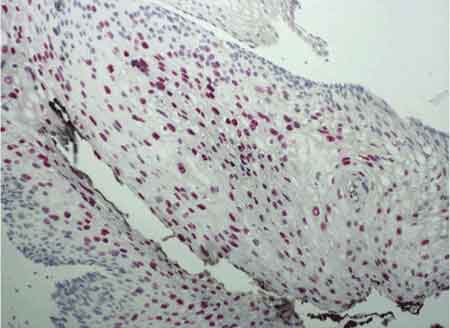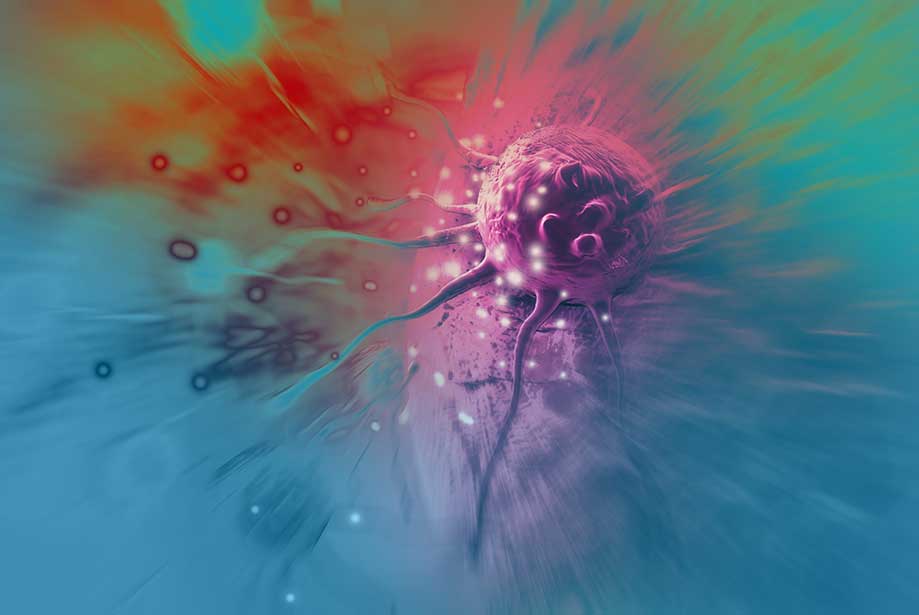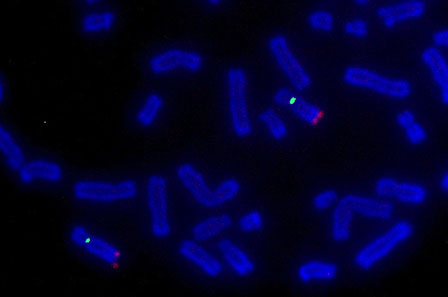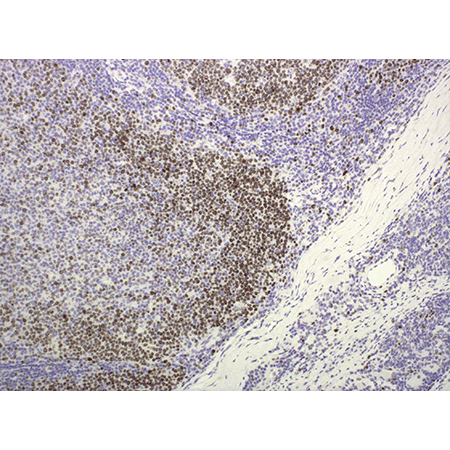The Concept of Tumor Biomarkers
Cancer is the second leading cause of death globally, and was responsible for an estimated 9.6 million deaths in 2018, i.e., about 1 in 6 deaths. Global cancer rates are expected to hit over 22 million new cases per year by 2030. In men, lung, prostate, and colorectal cancers are the most common cancer types, while in women cancers in breast, colorectal, and cervix uteri are the most common. The analysis of tumor biomarkers and their subsequent pathological interpretation is still a key part of cancer diagnostics and of choosing the correct treatment strategy for cancer patients. Traditionally, a tumor biomarker is a substance that can be detected in higher-than-normal amounts in the blood, urine, or body tissues of patients suffering from cancer. Often these (bio)markers are proteins that are produced in high levels by the tumor itself, or, alternatively, they may also be produced by the body as a response to the tumor. In addition, cancer-related gene expression patterns and genomic mutations may serve as cancer markers. If particular markers have been identified, they can be valuable tools for diagnosing cancer types and hence for choosing the most appropriate treatment regimen. Tumor marker levels may also reflect the stage of the disease, indicate how quickly the cancer is likely to progress, and help to determine prognosis of the disease. At Enzo, we offer a complete set of solutions for
cancer research including antibodies, ELISA kits, and recombinant proteins. Our diverse scientific and technical expertise has helped us create innovative assays and reagents to help support cancer research. We provide flexible and validated tools to help you generate reliable and consistent results.
Probe Detection Possibilities in FISH
However, no matter what nucleotide or reporter molecule is used for FISH, one must ensure probe binding efficiency such that there is no significant interference in the hybridization reaction. Probes should be large enough to hybridize specifically, but not be so large that they impede hybridization. Sequences containing a 10-25 nucleotide length is generally acceptable. Probes can be generated through various methods such as
nick translation,
random primed labeling,
PCR, and reverse transcription depending on experimental requirements. Within probe formats, there are also two options for fluorescent molecule attachment: direct and indirect probe labeling. Direct labeling requires incorporation of nucleotides pre-conjugated with fluorophores and only takes one-step to complete. Indirect labeling, on the other hand, uses nucleotides with a separate moiety attachment that is not the fluorescent molecule. These can be molecules such as
biotin, digoxigenin, or other haptens. This is followed by a second reaction between the nucleotide-bound moiety and the desired fluorescent molecule. One modified nucleotide of interest for indirect labeling involves allylamines in the form of allylamine-dUTP.
Breast Cancer Markers
Breast cancer is the most common malignancy in women and the second leading cause of cancer-related death worldwide with incidence rates increasing. Treatment selection in early breast cancer is mainly based on classical clinical and pathological tumor characteristics such as patient age, tumor size, axillary node status, histological grade and status of the estrogen receptor (ER), progesterone receptor (PR) and human epidermal growth factor receptor 2 (HER2). In particular, ER and HER2 have an established clinical utility as predictive biomarkers for endocrine and HER2-targeted therapy, respectively, and the protein levels of ER, PR and HER2 are routinely evaluated in surgical specimen using immunohistochemistry (IHC) assays.
Cell proliferation has also been extensively studied as a prognostic and predictive factor in breast cancer. The most common method deployed is the analysis of the nuclear antigen Ki-67 by IHC as its independent prognostic value has been demonstrated in several studies and meta-analyses. Also, the cyclin-dependent kinases (CDKs), a family of serine/threonine kinases that promote cell cycle progression, one of the hallmarks of cancer, together with their partner proteins, the cyclins, were already discovered over 20 years ago and their oncogenic effects in breast cancer are well characterized. Last year, Enzo launched two cost-effective antibodies to human
HER2 and
Ki-67 that both give strong, clear staining with minimal background for IHC.
At the genetic level, germline mutations in the DNA repair genes
BRCA1 and
BRCA2 are the most common alterations known in patients suffering from familial breast cancer. In addition, data from the Cancer Genome Atlas indicate that phosphatidylinositol 3-kinase (PI3K) is one of the most commonly mutated genes in breast cancer, and activating mutations of its catalytic domain PI3CA are found across all breast cancer subtypes. Finally, a number of gene expression signatures have been developed as tools for classification, prognosis, and tailoring of treatment in early breast cancer. Among the first and best validated assays are the polymerase chain reaction (PCR)-based 21-gene recurrence score and the Amsterdam 70-gene profile. Based on gene expression profiling of the tumors scientists were also able to determine that breast cancer can be classified into five intrinsic biological subtypes with differential prognosis.
Lung Cancer Markers
Lung cancer is the most common form of cancer in the world with approximately 1.8 million new cases annually. Research has shown that the epidermal growth factor receptor (EGFR) is produced in approximately 85 % of all non-small cell lung carcinoma (NSCLC) and that the presence of a mutation in the exons coding for the tyrosine kinase domain provides the protein with both a specific role as a cancer driver and has a particular sensitivity to tyrosine kinase inhibitors such as gefitinib, erlotinib, or afatinib. More than 40 different mutation sites have been identified in the
EGFR gene, the most common being a deletion in exon 19 (Del19) and a point mutation in exon 21 (L585R). Both of these account for more than 85 % of all detected mutations, consequently, PCR-based
EGFR mutation testing is a routinely performed diagnostic work-up of nonsquamous NSCLC these days.

Figure 3: Hybridization of a biotin-labeled HPV Type 6/11 probe to cervical biopsy tissue. Visualized with streptavidin-AP and HIGHDEF® red IHC chromogen (AP).
|
By fusion of the
ALK gene with another gene, most commonly
EML4 in lung cancer, a kinase with high oncogenic potential is generated which is mainly involved in cell proliferation. The gold standard and FDA-approved method to detect
ALK alterations in lung cancer is a break-apart fluorescence
in situ hybridization (FISH) assay. Enzo’s
Nick Translation DNA labeling system 2.0 kit provides a simple, rapid, reliable, and efficient method for end users to generate their own labeled DNA probes for FISH in just one hour. Enzo also offers
fluorophores with several distinct colors to choose from, spanning the visible light spectrum and guaranteeing high signal intensity and good photostability. This direct approach provides a simple and efficient method to label multiple sequences for FISH.
Enzo Life Sciences provides a wide range of products for all your cancer research needs. Our HER2/Neu monoclonal antibody provides a cost-effective opportunity for strong, clear staining with minimal background. Accompanying this are Enzo’s
immunohistochemistry reagents, which provide a complete set of tools for an efficient IHC process from start to finish. Enzo’s
SCREEN-WELL® Cancer Library provides a unique collection of 275 compounds. Furthermore, our
FISH reagents provide everything you need for labeling, hybridization, and detection. Check out our
Successful Research Tips. Additionally, contact our
Technical Support Team for further assistance.
















